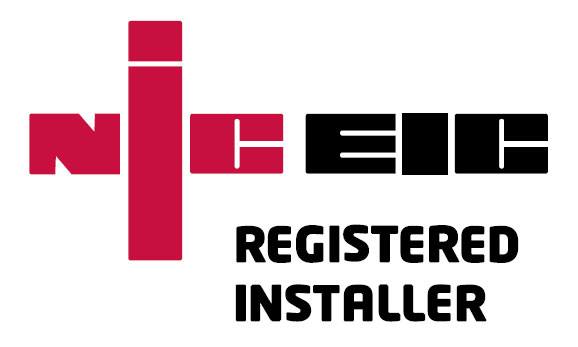When you buy discounted materials directly from the merchant, manufacturer, or online kit supplier, understand that you’re assuming liability for the end result. After all, the ‘designer’ is only providing an ‘indicative’ design suggesting where their materials ‘might’ fit. Before you buy it cheap, read the small print and accept you’re probably inheriting the risk.
Under-specified machines that need thrashing just to provide background ventilation are commonplace, but most MVHR complaints relate to noise caused by insufficient or poorly installed ducting, normally because the installer had to make the design fit as best they could. Unfortunately most of those issues only become apparent after someone moves in. But by then, pinpointing and fixing acoustic issues is almost impossible because the snags are hidden behind plasterboard.
Common problems include noisy machines, annoying vibrations, rattling pipes, humming or whistling ceiling vents, wet patches from condensation, or grumbling neighbours upset about the racket from exterior terminals. They happen easily, but they’re very difficult to fix. And then there’s the question of who’s responsible. Cheap MVHR doesn’t mean a less expensive project.
The new Building Safety Act allows civil claims for compensation for physical damage or injury caused by a breach of the building regulations, and the liability exists for ten years regardless of who is living in the property. Physical damage could just mean the house needs redecorating because of mould staining, injury could mean someone develops asthma because of mould spores, but the most serious risks relate to smoke and fire protection measures, or more specifically the lack of them.
Anything that exonerates the MVHR designer passes the buck to someone else. The designer will say it wasn’t installed to design, and the installer will say it wasn’t designed or specified properly. But if there’s a disclaimer firmly in place, the responsibility moves to the person paying the bill, either the client or their principal contractor because there’s nobody else left. That cheap system won’t be cheap if it causes someone a problem.
Somebody on your project is responsible for Part-B (fire safety) compliance. If you don’t know who that is yet, assume it’s you until you find out who it is..
Even with a super-accurate design, installers do occasionally need more materials. Sometimes partition walls get moved last minute, the fire protection strategy evolves, or the property just isn’t built to plan. Whatever the reason, at Solarcrest any additional material requests automatically trigger a design intervention. Why are more materials needed and what impact will they have on ventilation performance, acoustics, energy consumption, or fire safety? Does the design still accurately reflect the system installed? Our designer must ‘okay’ everything because it’s their baby until it’s finished.
During the install our Operations team aim to track general progress on site, prompting site managers when things need to happen, checking pre-requisites ahead of install visits, delivering materials just in time to save cluttering up the site, and coordinating with other trades when their input is needed. Every stage of the install is documented with photo or video reports so everything can be inspected online, or on-site if necessary. And when it is finally complete our installers know someone else will be inspecting their work, because final commissioning is always carried out by a 3rd-party technician. We don’t ask installers to mark their own homework.
If you want a fully managed install by hand-picked, experienced MVHR installers, and you like accountability, see what our customers say about our service. Read our ‘verified’ reviews.
The MVHR first fix is scheduled as soon as your roof covering is on, the floor slab or boarding is down, and you have safe access up the stairs along with any temporary handrails to protect workers. It’s ideally scheduled one week ahead of the plumbing and electrics first fix.
Your principal contractor duties include site welfare (WC & kettle), safe access, site power, installation of any MVHR compatible roof terminals, and a time slot ahead of the other first fix trades. Most first MVHR fixes are completed within a week, although larger properties can take longer. Provided we’re in first, it’s normally fine to start the rest of the first fix before we’re finished.
If you’re having additional sensors, wall mounted controllers, a link to the Internet, or a heating/cooling coil, our project manager will communicate the wiring and plumbing requirements to the site manager in good time. Who does what core drilling is project and location specific.
The plant install is ideally scheduled after the plantroom or utility has been boarded, skimmed, and given a mist coat of paint. This phase includes the machine, the ‘mass flow’ ducting to outdoors and to the distribution manifolds, fitting as few bends as possible to minimise air resistance. Having the final floor in place is preferable too if yours is a larger unit that sits on a stand. And given the value of the MVHR unit, it’s best if the site is secure with the windows in.
Ahead of the plant install the principal contractor normally runs a wastewater pipe up to the machine/s and fits a switched fused outlet on a separate spur from the consumer unit. Our 3D design shows exactly where the machine is going, so it’s important to share it with everyone before other plant is installed. Pin it to the wall if necessary. Things like electrical consumer units, underfloor heating manifolds, heat pump expansion tanks, boilers, flues, and water cylinders all need planning around the MVHR.
A neat plantroom arrangement is the key to a quiet system, so besides large pipes and wide bends we fit attenuators to the ducting running to the habitable rooms, plus anti-vibration feet or hangers to the machine itself, and rubber de-couplers to separate the (gently) humming machine from the fixed structure of the building. With MVHR there’s no such thing as ‘good vibrations’.
NOTE: To prevent overheating in the summer there should be no heat generating equipment in the same location. Even a well-insulated water cylinder will warm the plantroom, which then warms the air distribution pipes, which then warms to supply air temperature when you really want to be cooling it.
The MVHR second fix is normally a short visit scheduled when the decorating is almost complete. Besides another system inspection, second fix tasks include trimming the ceiling plenums flush so the ceilings can have a final coat of paint before the air supply/extract valves are fitted. The condensate drain on the machine is connected to the waste provided, and ideally tested. The power is connected along with any low voltage control or data cables.
Ultimately, the purpose of the 2nd fix is to identify and repair any final snags in preparation for final system commissioning.





